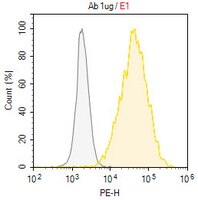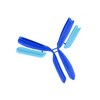MABF2312-100UG Sigma-AldrichAnti-CD11a Antibody, clone TS2/4
Anti-CD11a, clone TS2/4, Cat. No. MABF2312, is a mouse monoclonal antibody that detects CD11a and is tested in Flow Cytometry, Gel Electrophoresis, Immunofluorescence, Immunoprecipitation, Immunoaffinity Purification, Inhibition Assay, Radioimmunoassay.
More>> Anti-CD11a, clone TS2/4, Cat. No. MABF2312, is a mouse monoclonal antibody that detects CD11a and is tested in Flow Cytometry, Gel Electrophoresis, Immunofluorescence, Immunoprecipitation, Immunoaffinity Purification, Inhibition Assay, Radioimmunoassay. Less<<Recommended Products
Overview
| Replacement Information |
|---|
| References |
|---|
| Product Information | |
|---|---|
| Format | Purified |
| Presentation | Purified mouse monoclonal antibody IgG1 in PBS without preservatives. |
| Quality Level | MQ200 |
| Physicochemical Information |
|---|
| Dimensions |
|---|
| Materials Information |
|---|
| Toxicological Information |
|---|
| Safety Information according to GHS |
|---|
| Safety Information |
|---|
| Packaging Information | |
|---|---|
| Material Size | 100 μg |
| Transport Information |
|---|
| Supplemental Information |
|---|
| Specifications |
|---|
| Global Trade Item Number | |
|---|---|
| Catalog Number | GTIN |
| MABF2312-100UG | 04065270937964 |
Documentation
Anti-CD11a Antibody, clone TS2/4 Certificates of Analysis
| Title | Lot Number |
|---|---|
| Anti-CD11a, clone TS2/4 - Q4108271 | Q4108271 |














